操作方法
如何:使用 Site Scan Flight for ArcGIS 执行面积测量
摘要
In Site Scan Flight for ArcGIS, each of the flight modes serves a specific purpose, for example, if capturing the differences in elevation within a site for a point cloud or creating a DEM is the aim, flying a Crosshatch Survey is the best option.
Similarly, if a two-dimensional representation of the site through an orthophoto for CAD overlay or measuring horizontal distances is required, Area Survey is a better option. There are more use cases and advantages to each survey type, the following is a description of Area Survey flight mode.
过程
- Open the app to display the Project List.
- From the Project List, select the project for this new flight, or create a new project by selecting Create New Project.
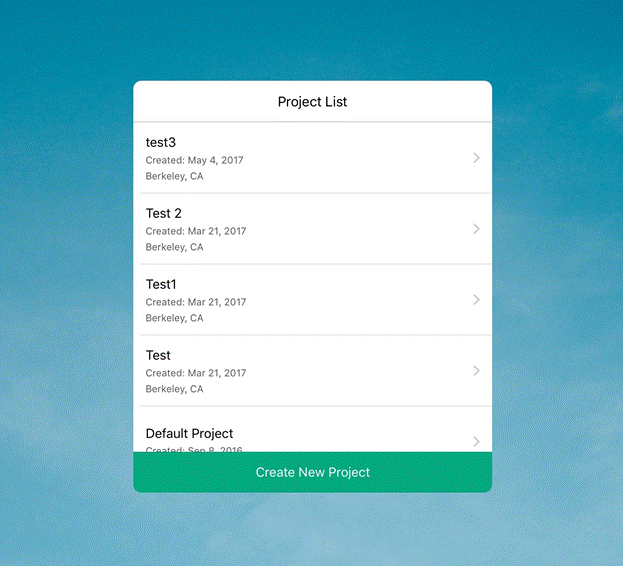
- After selecting a project, the Flight Modes screen is displayed. Select Area Survey to go to the map view screen. Note the telemetry information at the top and the aircraft location on the map (when a GPS connection is established).
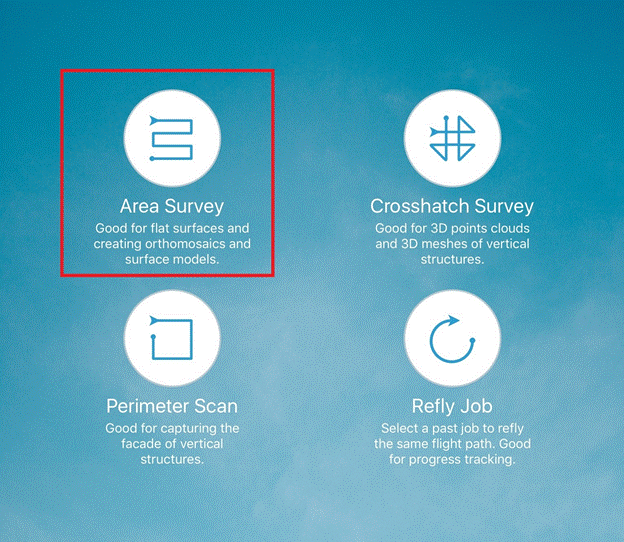
- The Flight Settings window allows modifying the Altitude , Gimbal Angle , and Hatch Angle of the survey.
- Modify the Altitude at which the survey must be performed by moving the slider. A higher altitude impacts the resolution per pixel but also translates to having fewer images and less flight time.
- Moving the Gimbal Angle slider determines where the gimbal is pointing towards during the survey, be it straight down (nadir) or straight forward (horizon).
- Modifying the Hatch Angle allows choosing an optimal path for the vehicle to take during the survey. It is best to choose a hatch angle that decreases the number of turns in the survey. Note that the hatch angle is optimized by the application, but it is possible to modify as needed.
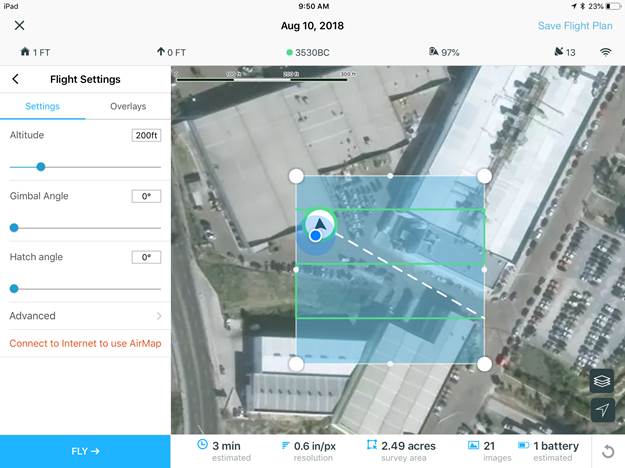
- For this example, set the survey Altitude to one that clears all obstructions (while taking into account local flight regulations), and leave the Gimbal Angle at zero degrees.
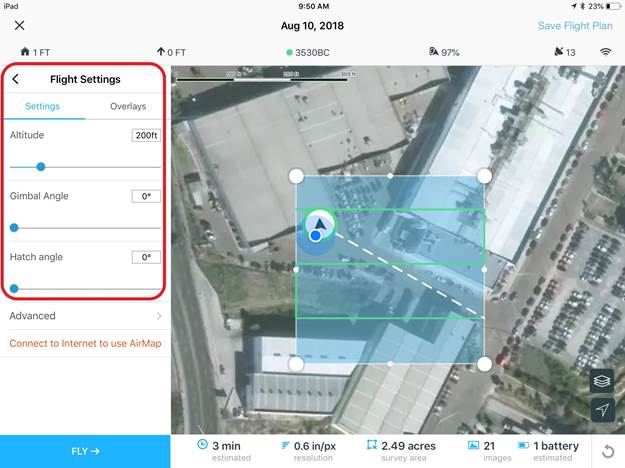
- When on this screen, a box is automatically created displaying the area of the survey.
- Drag each of the four corners to move the vertices around, and place the survey box over the area of interest.
- Tap and hold the corners to move the vertices around.
- Create new vertices by grabbing the small circles in between each vertex.
- At the bottom of the screen is an Undo button.
Statistics on the bottom show:
- How long the mission is expected to take
- The estimated ground sampling distance (GSD) of the photos
- The acreage
- The number of photos expected to be taken
- Begin flying the planned survey, tap the green Fly Survey button at the bottom of the screen. This introduces a checklist while the system runs, and ensures the aircraft is ready to fly.
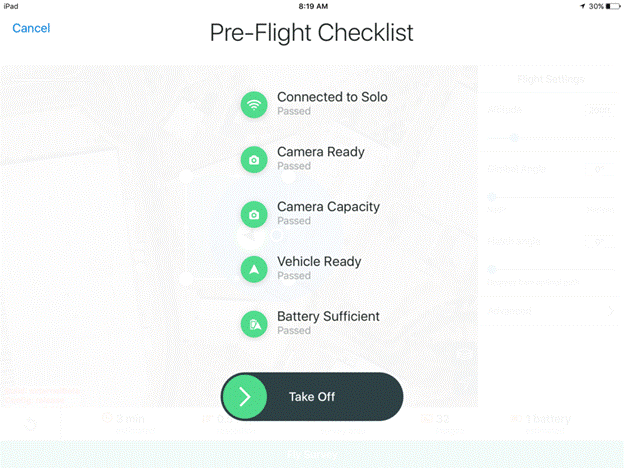
- Move the Take Off slider to the right for take off. The drone takes off and reaches the desired altitude. The camera points to nadir once it reaches the altitude.
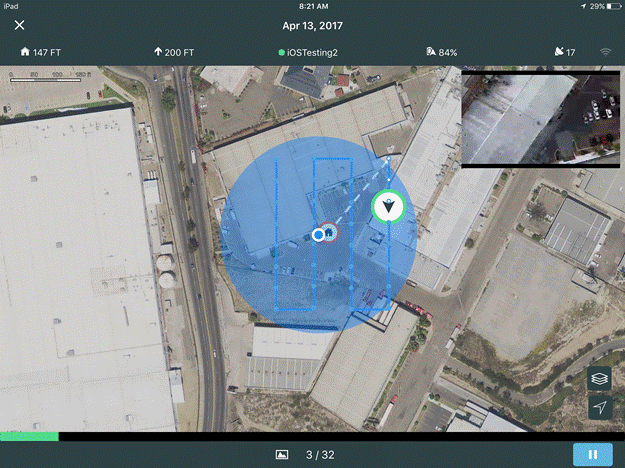
The drone flies the path noted on the screen. The dots turn white after the aircraft has passed the checkpoint. A progress bar at the bottom of the screen indicates the progress of the mission, while the numbers at the bottom indicate the number of photos taken versus the number of photos required for the mission.
It is possible to pause the mission during the flight by tapping the Pause button at the bottom-right of the screen.
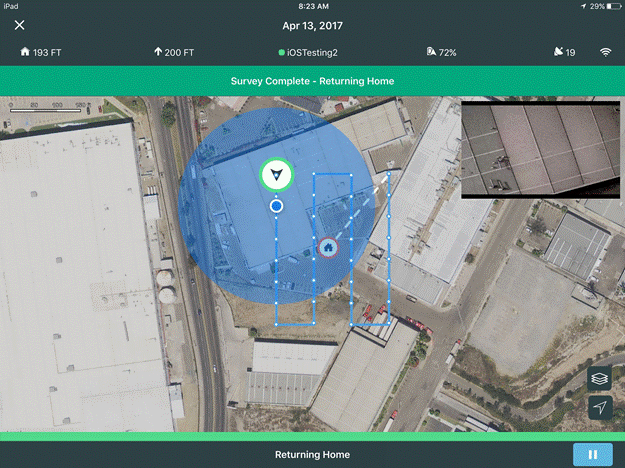
After the survey is complete, the aircraft returns home.
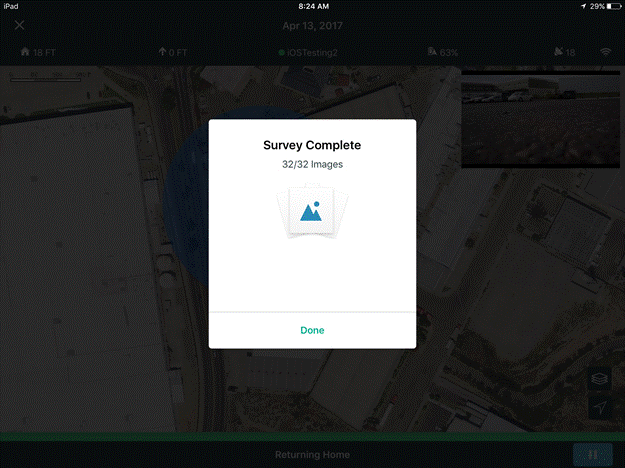
After landing, the app retrieves the flight data from the aircraft. This may take a few seconds to complete.
Once the flight data have been retrieved, the app displays the number of photos taken and geotagged. At this point, do not turn off the vehicle or the controller yet.
Flights screen
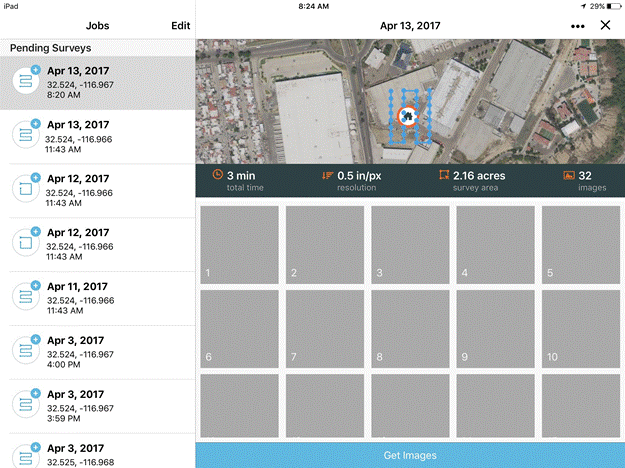
- After the flight is retrieved, click the X at the top-left of the screen to return to flight mode. A flight notification appears on the upper-left of the screen. Clicking this button opens the flight’s page. The flight can be renamed by clicking the ellipses (…) on the top-right.
- Tap the blue Get Images button at the bottom to retrieve the images wirelessly from the camera.
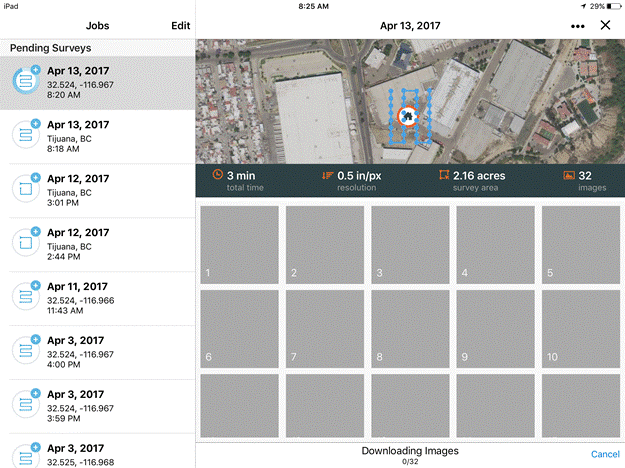
- After the download is complete, the button changes to an Upload to 3DR Cloud button. Connect to the internet to upload the images.
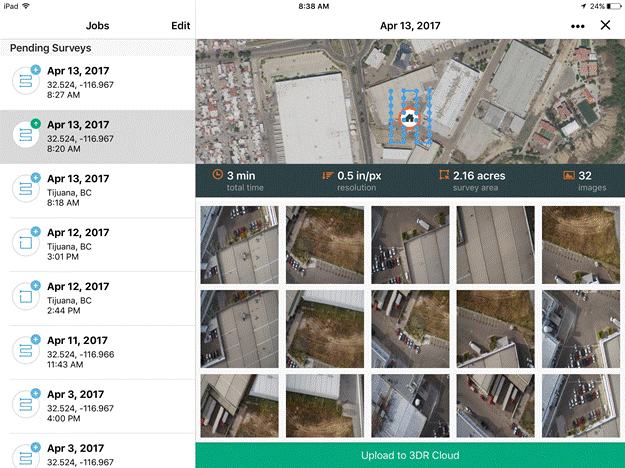
After the upload of an image to the 3DR storage cloud is complete, white check-marks are displayed on them. Once the progress bar at the bottom shows fully loaded, the upload is complete.
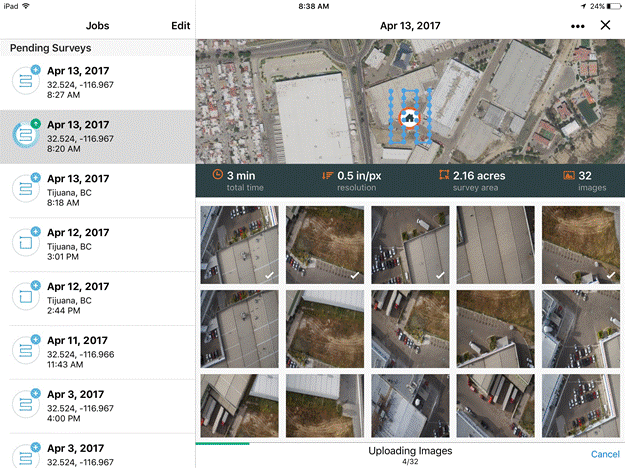
Process Flight
Whenever uploading a flight to Site Scan Manager for ArcGIS, processing starts automatically. When creating a new flight directly from Manager however, follow these instructions:
- After logging in to Manager using Site Scan for ArcGIS credentials, select the project on the left sidebar containing the flight to process. (Alternatively, click the Projects button to select it.)
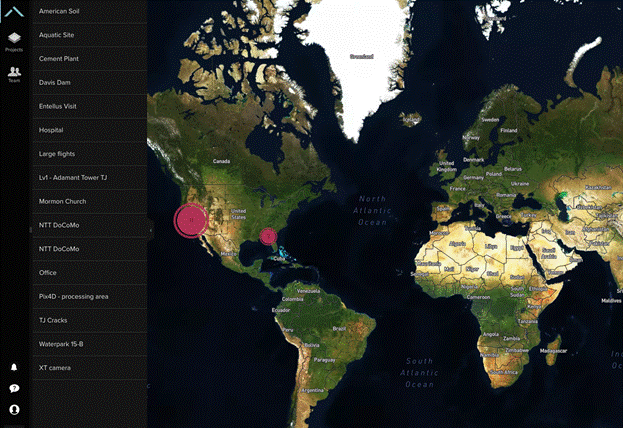
- Click the flight name at the top-left to display a drop-down menu showing all the different flights available within that Project. Use the arrows pointing left and right to scroll between them; they are ordered by date.
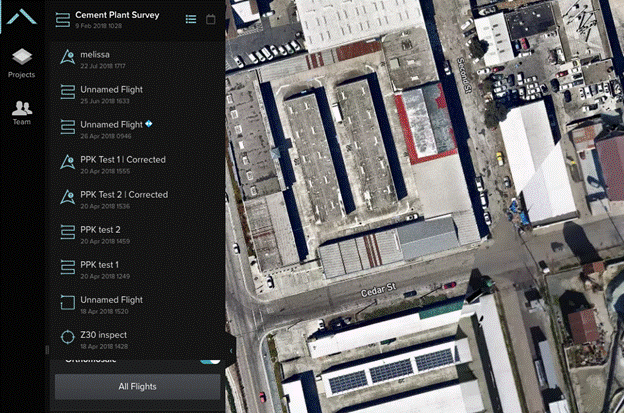
- Once the desired flight is selected, click the Process button on the bottom-left corner.
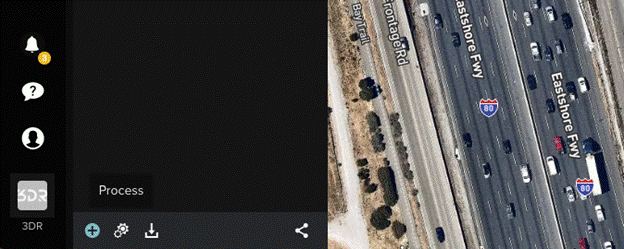
At this point, the processing phase starts. It is possible to tell the flight is processing by the icon displayed next to the orthomosaic section under Layers. A pop-up notification displays the estimated processing time on the bottom-right corner.

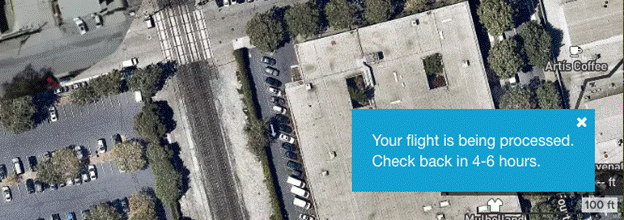
- After processing is complete, click the Export icon on the bottom-left corner of the screen, which opens a window with all the resulting files. Clicking any one of them initiates the download of the file.

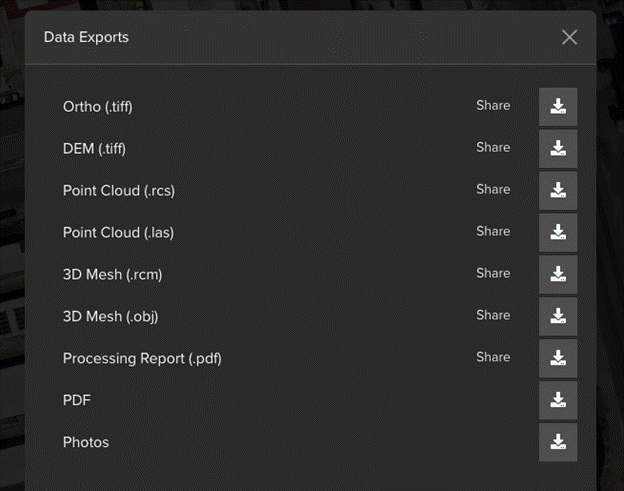
文章 ID: 000023059
获取来自 ArcGIS 专家的帮助
立即开始聊天

